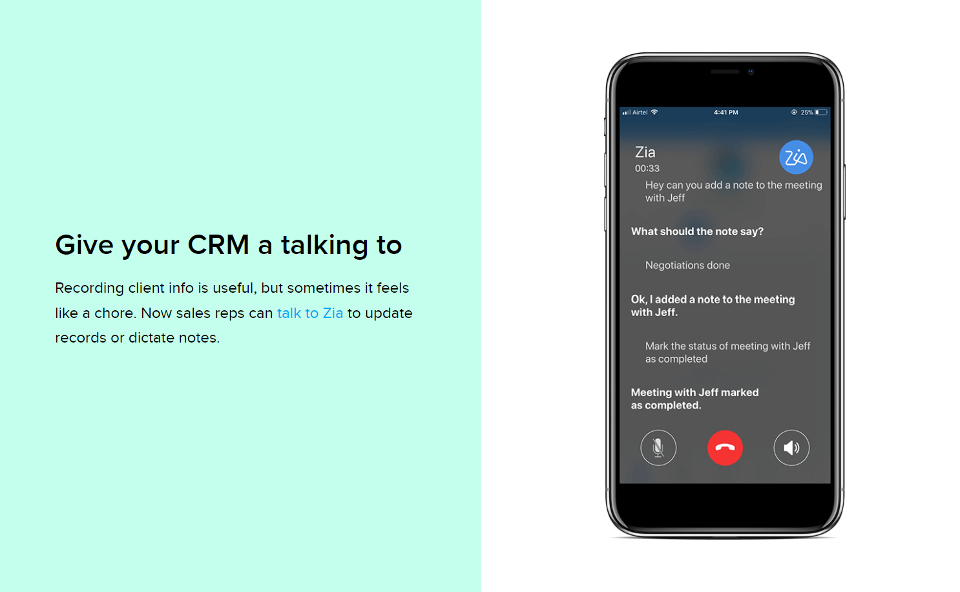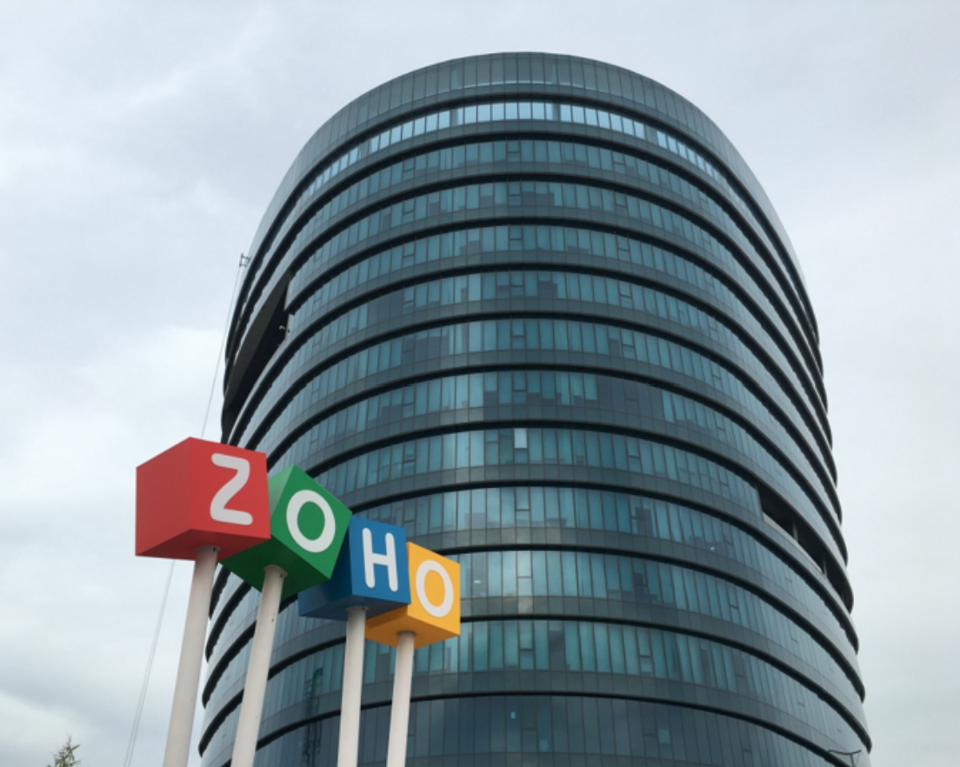I had the chance to attend Zoho’s annual analyst day which it held in Austin, TX, a few months back. I have been remiss in writing this up, but honestly, COVID19 and a few other things got in the way of knocking it out.
Rather than give my readers a specific take on what I saw there, I want to assume that you’ve never heard of the company in spite of its success.
As an industry, I think it’s safe to assume that a good quality customer experience (CX) results in a stickier and more monetizable customer base. Customer relationship management (CRM) platforms are critical tools in bridging the gap between a customer and a company’s relationship to make for excellent customer experience. Zoho is one of the lesser-known enterprise-level SaaS companies and arguably the most successful business software as a service (SaaS) company you have never heard of. Let’s make that case and look at what Zoho is doing to make such a statement.
About Zoho
Zoho is a business software solutions company with over 20 years of experience in business software development. It began with its Zoho CRM platform in 2005 and has expanded to all different departments of business and enterprise. Zoho also offers an enterprise-level subscription called Zoho1. Zoho One has all 40+ of Zoho’s apps bundled together to make for a connected “operating system for business.” Zoho has over 50 million users in over 180 countries globally.
How they do it
The bread and butter of Zoho’s operating system as a business is its CRM platform. When people think of a sale, they think of the Point of sale (POS). The POS is where the sale takes place but that is not where it starts nor where it is finalized. A sale typically starts with a lead and some advertisements and leads to the point of sale and in many cases multiple POSs.
The difficult problem of CX platforms is making it usable and adaptable across diverse use cases. Adoption depends on a company’s use case and Zoho wants to lower the barrier of technology adoption. Zoho One is scalable in its apps and services and needs to be personable based on the relationship between the customer and company’s relationship. Companies can start with Zoho’s CRM and implement its other apps and services over time. In the process of adopting Zoho’s platform, Zoho’s apps can be integrated with other apps like Gsuite.
The sale and customer interaction in the sale are evolving. More and more customers are interacting with the pre-sale, sale, and post-sale so that customer experience is more than just the CRM and more than just customer service. All interactions of the sale need to be scalable. Zoho’s solution is to make its software, specifically Zoho One, personable vertically as well as horizontally.

When all its software is connected across all departments, it becomes a unified experience. This unified experience is Zoho One’s horizontal solution-create a connected platform that is scalable. Companies that are connected across all departments of business tend to get things done faster and more efficiently. Collaboration happens proactively as information is shared from app to app across different departments. Zoho’s proactive approach to its CX platform trumps a reactive approach every time.
Zoho’s vertical integration connects its apps with its services and its services with its platform infrastructure to minimize personalization barriers. The CX platform is no longer a surface-level experience. Zoho has 45+ apps connected to Zoho’s AI, Search, Analytics, single sign-on (SSO), Messaging, and other services. When this happens, apps are personalized from contextual data from the customer. Sales can more rapidly identify signals and intelligently orchestrate the process of a sale. A personalization layer unifies Zoho’s services with its apps. All of Zoho’s apps and services are optimized on Zoho’s Network and database. Zoho’s acceleration Network (ZAN) is optimized to reduce latency for its customers. ZAN has 9 sites on the edge and growing globally. None of Zoho’s global cloud platform is public. Optimization is there for Zoho’s infrastructure and growth.
Personalization and implementation in AI and ML
One of the many ways Zoho unifies and connects its CX platform horizontally and vertically is by implementing AI and machine learning into its software. Zoho’s AI has breadth and depth. Zoho’s AI has breadth in that it is implemented across apps to get contextualized data where it needs to go intelligently. Zia is Zoho’s intelligent assistant for Zoho’s operating system for business. Zia gives insights and contextualizes data to share and connect all departments. Zoho AI has depth in that it optimizes all levels of the CX platform. Services and apps have a rich implementation of AI and machine learning that comes from years of R&D at Zoho. AI and ML at Zoho started with its sales and marketing platforms and has expanded and continues to expand in AI tools across all departments of Zoho’s CX platform

Competition
The difference between Zoho and other CRM platforms like Salesforce, Sugar, and Highrise is that Zoho’s focus is on an operating system for business. Salesforces is a larger company and has over 2,600+ apps as well as its own business suite. Sugar CRM focuses on cloud innovations and information management. Highrise focuses on the relationship with the customer and the user. Zoho focuses on implementing all these features to create an all-in-one operating system for business.
Wrapping up
The difficulty of implementing software into an enterprise is connecting all the data without compromising a customer’s personal experience. Zoho’s success is its focus on scalability by unifying its CX platform horizontally and vertically means that more companies can be personal with their customers. Zoho has a plan for minimizing the adoption barrier of its operating system for business.
I will be attending Zoho’s Zoholics virtual customer event soon and hope to see you there digitally!
Note: Moor Insights & Strategy writers and editors may have contributed to this article.
Disclosure: Moor Insights & Strategy, like all research and analyst firms, provides or has provided paid research, analysis, advising, or consulting to many high-tech companies in the industry, including Amazon.com, Advanced Micro Devices, Apstra, ARM Holdings, Aruba Networks, AWS, A-10 Strategies, Bitfusion, Cisco Systems, Dell, Dell EMC, Dell Technologies, Diablo Technologies, Digital Optics, Dreamchain, Echelon, Ericsson, Foxconn, Frame, Fujitsu, Gen Z Consortium, Glue Networks, GlobalFoundries, Google, HP Inc., Hewlett Packard Enterprise, Huawei Technologies, IBM, Intel, Interdigital, Jabil Circuit, Konica Minolta, Lattice Semiconductor, Lenovo, Linux Foundation, MACOM (Applied Micro), MapBox, Mavenir, Mesosphere, Microsoft, National Instruments, NetApp, NOKIA, Nortek, NVIDIA, ON Semiconductor, ONUG, OpenStack Foundation, Panasas, Peraso, Pixelworks, Plume Design, Portworx, Pure Storage, Qualcomm, Rackspace, Rambus, Rayvolt E-Bikes, Red Hat, Samsung Electronics, Silver Peak, SONY, Springpath, Sprint, Stratus Technologies, Symantec, Synaptics, Syniverse, TensTorrent, Tobii Technology, Twitter, Unity Technologies, Verizon Communications, Vidyo, Wave Computing, Wellsmith, Xilinx, Zebra, ZOHO which may be cited in this article.

